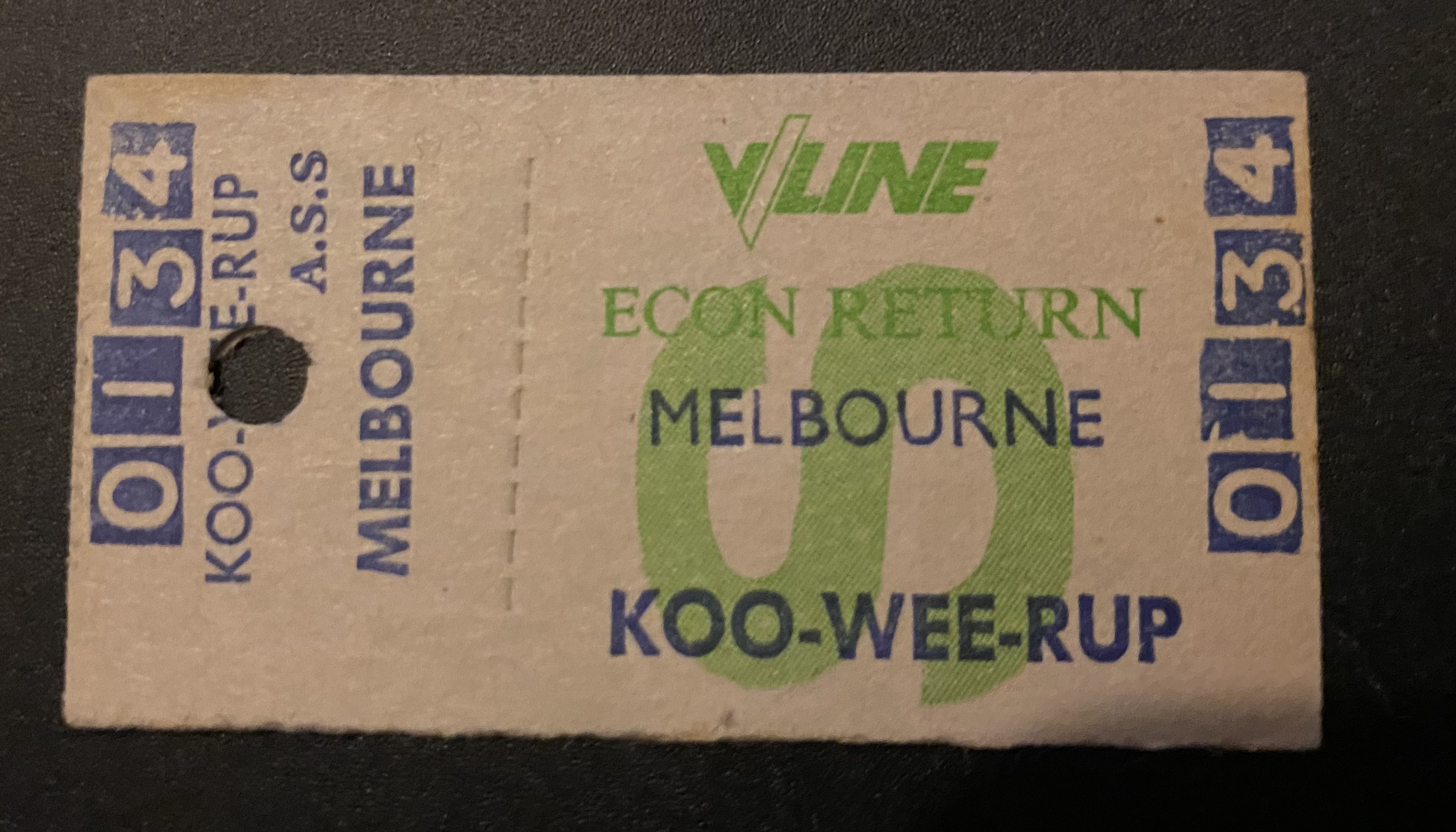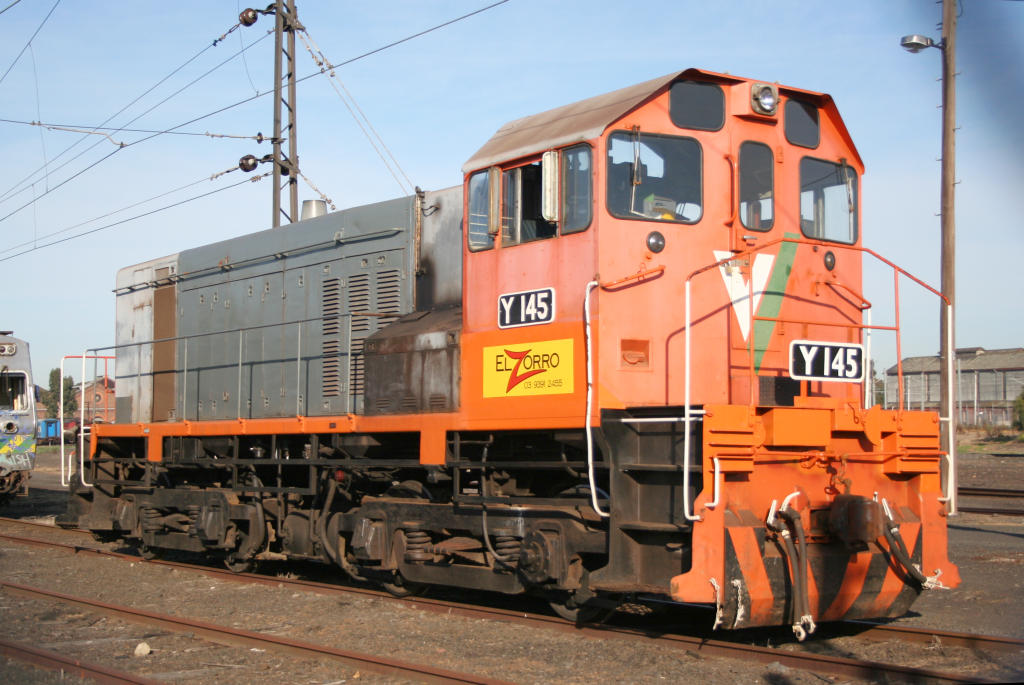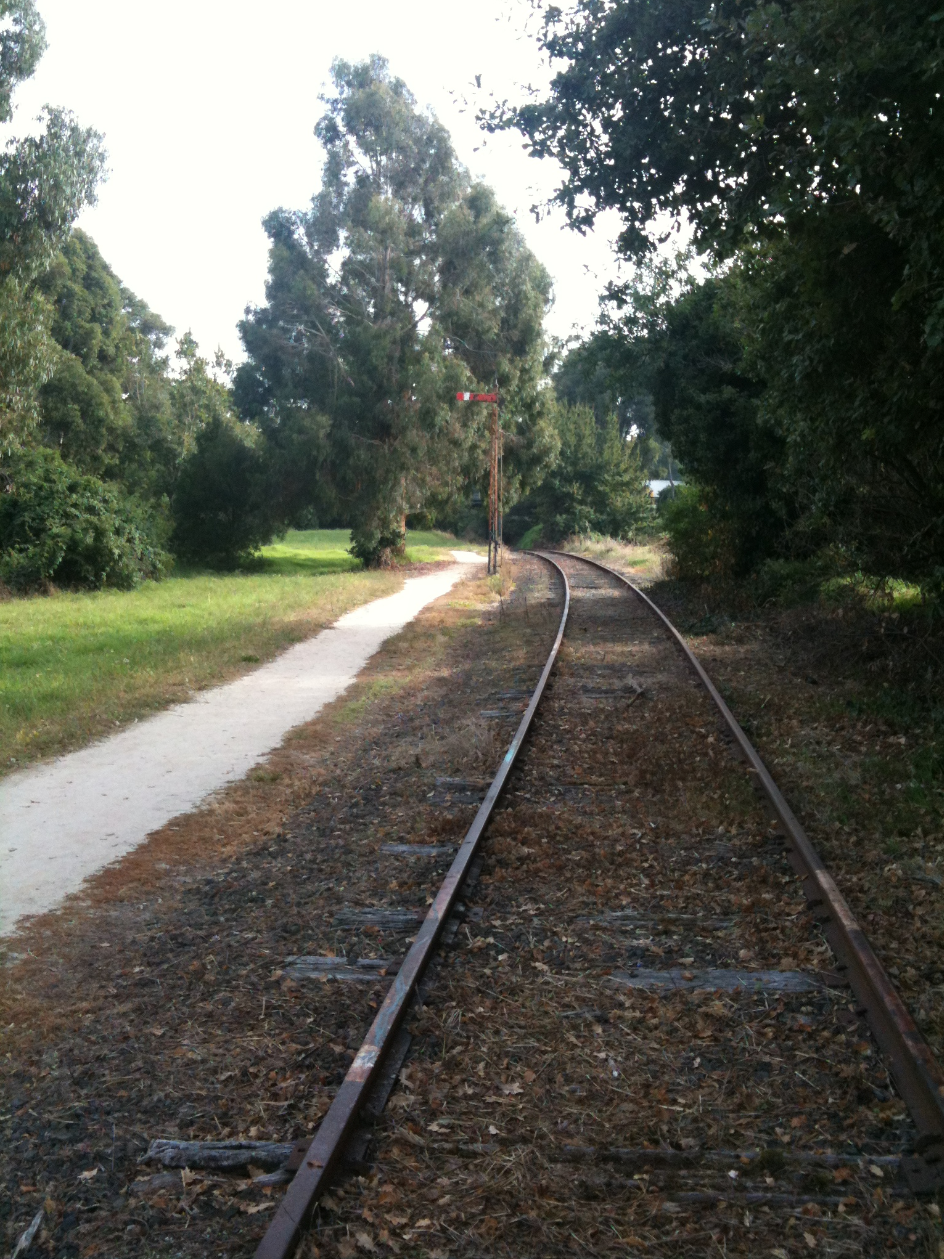|
AGM Siding
Australian Glass Manufacturers Siding, which is also known as Koala Siding, was a railway siding on the South Gippsland line in South Gippsland, Victoria, Australia. The siding was the last new siding on the line, being opened during the 1960s. It was the last source of traffic on the line after the withdrawal of the Leongatha passenger service on 24 July 1993. By the mid-1990s, only T, Y and P class diesel locomotives were used on the line due to their low axle loads, with a 15 km/h speed limit applying to parts of the track. This continued until 15 January 1998 when the sand train to the AGM glass works at Spotswood station ceased operation. The track between Nyora and Lang Lang was proposed for an extension for the South Gippsland Tourist Railway. However, the SGR ceased operations in 2015, and the line from Leongatha to Nyora has been dismantled as part of an extension of the Great Southern Rail Trail The Great Southern Rail Trail is a 109-kilometre rail trail fr ... [...More Info...] [...Related Items...] OR: [Wikipedia] [Google] [Baidu] |
South Gippsland Railway Line
The South Gippsland railway line is a partially closed railway line in Victoria, Australia. It was first opened in 1892, branching from the Orbost line at Dandenong, and extending to Port Albert. Much of it (the section up to Leongatha) remained open until December 1994 (passenger services finished the previous July). Today, only the section between Dandenong and Cranbourne remains open for use. The section of the line from Nyora to Leongatha was used by the South Gippsland Tourist Railway until it ceased operations in 2016. The section from Nyora to Welshpool, with extension trail to Port Welshpool and a portion of the former line at Koo Wee Rup, have been converted into the Great Southern Rail Trail. History The Melbourne and Suburban Railway Company opened a line from Princes Bridge railway station to Punt Road (Richmond) and South Yarra in 1859 and extended to Dandenong in 1879. The South Gippsland railway line was opened from Dandenong to Cranbourne in 1888 and extended ... [...More Info...] [...Related Items...] OR: [Wikipedia] [Google] [Baidu] |
List Of Closed Railway Stations In Victoria
This is a list of former railway stations and railway lines in Victoria, Australia. Many of these stations and lines have been abandoned or demolished. There is a strong desire by communities to have many of these re-opened to better link Regional Victoria to the state capital Melbourne. Public transport has become increasingly popular in the 21st century for convenience and affordability reasons. For closed railway stations in suburban Melbourne, see List of closed railway stations in Melbourne. Mildura line Originally withdrawn on 12 September 1993. Once served by ''The Vinelander'' service, the line branches from the Serviceton line at Ballarat. * Dunolly * St Arnaud *Donald *Birchip *Ouyen * Red Cliffs *Irymple *Mildura Leongatha line The passenger service was withdrawn on 24 July 1993, but the Dandenong to Cranbourne section was later electrified and became part of the Melbourne suburban rail network in 1995. *Cranbourne East *Clyde *Tooradin *Koo Wee Rup *Lang Lan ... [...More Info...] [...Related Items...] OR: [Wikipedia] [Google] [Baidu] |
Rail Siding
A siding, in rail terminology, is a low-speed track section distinct from a running line or through route such as a main line, branch line, or spur. It may connect to through track or to other sidings at either end. Sidings often have lighter rails, meant for lower speed or less heavy traffic, and few, if any, signals. Sidings connected at both ends to a running line are commonly known as loops; those not so connected may be referred to as single-ended or dead-end sidings, or (if short) stubs. Functions Sidings may be used for marshalling (classifying), stabling, storing, loading, and unloading vehicles. Common sidings store stationary rolling stock, especially for loading and unloading. Industrial sidings (also known as spurs) go to factories, mines, quarries, wharves, warehouses, some of them are essentially links to industrial railways. Such sidings can sometimes be found at stations for public use; in American usage these are referred to as team tracks (after the use ... [...More Info...] [...Related Items...] OR: [Wikipedia] [Google] [Baidu] |
South Gippsland
South Gippsland, a region of Gippsland in Victoria, Australia, is a well-watered region consisting of low, rolling hills descending to the coast in the south and the Latrobe Valley in the north. Low granite hills continue into Wilsons Promontory, the southernmost point of Victoria and mainland Australia. Rivers are generally very short and impossible to dam owing to the lack of potential storage sites, but groundwater of good quality is readily available. The major industries are forestry and dairy farming, and the principal towns include Cowes (on Phillip Island), Leongatha, Korumburra, Wonthaggi and Foster. Wilsons Promontory National Park features eucalypt forests and rainforests as well as its famous beaches, and is one of the most popular holiday areas in Victoria. Linked to mainland South Gippsland via a bridge at San Remo, Phillip Island is also a major tourist destination, noted particularly for its surf beaches, nightly Penguin Parade and Grand Prix track. 12,000 y ... [...More Info...] [...Related Items...] OR: [Wikipedia] [Google] [Baidu] |
Victoria (Australia)
Victoria is a state in southeastern Australia. It is the second-smallest state with a land area of , the second most populated state (after New South Wales) with a population of over 6.5 million, and the most densely populated state in Australia (28 per km2). Victoria is bordered by New South Wales to the north and South Australia to the west, and is bounded by the Bass Strait to the south (with the exception of a small land border with Tasmania located along Boundary Islet), the Great Australian Bight portion of the Southern Ocean to the southwest, and the Tasman Sea (a marginal sea of the South Pacific Ocean) to the southeast. The state encompasses a range of climates and geographical features from its temperate coastal and central regions to the Victorian Alps in the northeast and the semi-arid north-west. The majority of the Victorian population is concentrated in the central-south area surrounding Port Phillip Bay, and in particular within the metropolit ... [...More Info...] [...Related Items...] OR: [Wikipedia] [Google] [Baidu] |
Australia
Australia, officially the Commonwealth of Australia, is a Sovereign state, sovereign country comprising the mainland of the Australia (continent), Australian continent, the island of Tasmania, and numerous List of islands of Australia, smaller islands. With an area of , Australia is the largest country by area in Oceania and the world's List of countries and dependencies by area, sixth-largest country. Australia is the oldest, flattest, and driest inhabited continent, with the least fertile soils. It is a Megadiverse countries, megadiverse country, and its size gives it a wide variety of landscapes and climates, with Deserts of Australia, deserts in the centre, tropical Forests of Australia, rainforests in the north-east, and List of mountains in Australia, mountain ranges in the south-east. The ancestors of Aboriginal Australians began arriving from south east Asia approximately Early human migrations#Nearby Oceania, 65,000 years ago, during the Last Glacial Period, last i ... [...More Info...] [...Related Items...] OR: [Wikipedia] [Google] [Baidu] |
Victorian Railways T Class (diesel)
The T class are a class of diesel locomotives built by Clyde Engineering, Granville for the Victorian Railways between 1955 and 1968. History In July 1954, the Victorian Railways placed an order with Clyde Engineering for 25 (later extended to 27) diesel electric Electro-Motive Diesel G8 locomotives to partially dieselise country branch lines.1st Order (27 locos): T320-T346 & T413 (1 loco) Mark Bau's VR website In June 1959, the first of an additional ten entered service. Although mechanically similar to the first batch, they differed by having a cab raised above the hood line. Mark Bau's VR website A further ten entered service from Dece ... [...More Info...] [...Related Items...] OR: [Wikipedia] [Google] [Baidu] |
Victorian Railways Y Class (diesel)
The Y class are a class of diesel locomotives built by Clyde Engineering, Granville for the Victorian Railways between 1963 and 1968. History In 1963, the first of 25 general purpose diesel-electric locomotives was delivered by Clyde Engineering. As a cost saving measure, they were built with bogies and motors retrieved from scrapped Swing Door electric suburban train sets; the re-use of these components reduced the unit cost of the Y class locomotive from around £52,000 ( $104,000) to £40,000 ($80,000). Two further orders saw the class total 75 by 1968. Although built to dieselise Victoria's shunting operations and replace steam locomotives on branch line services, they were also used on mainline goods and passenger services, including between Spencer Street and Werribee. After closure of branch lines across the state and the end of short pick-up goods trains, use of the class dropped. In the 1980s, it is thought that four Y Class locomotives were on standard gauge, t ... [...More Info...] [...Related Items...] OR: [Wikipedia] [Google] [Baidu] |
V/Line P Class (diesel)
The P class are a class of diesel locomotives rebuilt from T class locomotives by Clyde Engineering, Somerton for V/Line in 1984–1985. History The P class were rebuilt from 1950s T class locomotives by Clyde Engineering. The rebuild involved a new cab and carbody, replacing the EMD 8-567C engine with an EMD 8-645E, replacement of the main generator and traction motors, and provision of a separate head end power generator. Only first-series T Class locomotives were suitable for upgrading because their frames were designed for EMD 12-567 engines, with only 2/3rds of the length used to cut down on weight (and allow a Bo-Bo, instead of A1A-A1A or Co-Co wheel arrangement). When rebuilt, the 8-645 engine took the place formerly occupied by the 8–567, and the remaining space was utilised for the head-end power unit. The first eight of the class were in service with V/Line; Pacific National has one engine stored, and Ettamogah Rail Hub has four. In passenger usage, they were m ... [...More Info...] [...Related Items...] OR: [Wikipedia] [Google] [Baidu] |
Spotswood Railway Station
Spotswood railway station is located on the Werribee and Williamstown lines in Victoria, Australia. It serves the western Melbourne suburb of Spotswood, and opened on 1 December 1878 as Edom. It was renamed Bayswater on 1 September 1881, renamed Spottiswoode on 1 October 1881, and renamed Spotswood on 1 August 1905. History Spotswood station opened on 1 December 1878 and, like the suburb itself, was named after John Stewart Spottiswoode, a local resident who purchased land in the area in 1841. Over the years, a number of sidings were provided to businesses in the area. In 1914, a branch line was opened at the down end of the station to the Newport Power Station, in addition to a number of other sidings serving oil terminals in the area. A siding at the up end of the station served the Australian Glass Manufacturers factory, and was used by sand trains from Koala Siding (near Nyora on the South Gippsland line). On 15 January 1998, the last sand train operated. In 1972 ... [...More Info...] [...Related Items...] OR: [Wikipedia] [Google] [Baidu] |
South Gippsland Tourist Railway
The South Gippsland Railway was a tourist railway located in South Gippsland, Victoria, Australia. It controlled a section of the former South Gippsland railway line between Nyora and Leongatha, and operated services from Leongatha to Nyora, via Korumburra, the journey taking about 65 minutes. History The South Gippsland line (also known as the ''Great Southern Railway'') was opened from Dandenong to Cranbourne in 1888 and extended to Koo Wee Rup, Nyora and Loch in 1890, Korumburra and Leongatha in 1891. The line had numerous branches which included: the Strzelecki Line; branching from Koo Wee Rup, the Wonthaggi Line; branching from Nyora, the Coal Creek, Austral Coal and Outtrim Lines; branching from Korumburra, Barry's Beach Oil Terminal Line; branching between Toora and Welshpool, and the Port Albert Line branching from Alberton. South Gippsland Railway Inc. (SGR) was founded in 1990 as a separate entity to the ''Great Southern Railway Society'', based in Nyora, whe ... [...More Info...] [...Related Items...] OR: [Wikipedia] [Google] [Baidu] |
Great Southern Rail Trail
The Great Southern Rail Trail is a 109-kilometre rail trail from Nyora to Welshpool in South Gippsland, Victoria, Australia. This mostly flat or gently undulating trail goes through lush dairy farmland, areas of remnant bush and lowland scrub. It climbs from the foothills of Fish Creek up past Mount Hoddle and then down a steep descent through dense forest out into magnificent views of Wilsons Promontory and Corner Inlet, continuing on to Foster. before ending at Welshpool. The trail is well maintained with a surface of compacted gravel. Koalas Wombats and wallabies can often be seen from the trail particularly in the early mornings and evenings. The 10 km Toora to Welshpool section was opened on 7 February 2015. A section from Koonwarra to Minns road was opened in March 2016 incorporating what were three very dilapidated wooden trestle bridges. This section replaces what was a three kilometer diversion to the nearby South Gippsland Highway. The section provides a contin ... [...More Info...] [...Related Items...] OR: [Wikipedia] [Google] [Baidu] |

.jpg)






